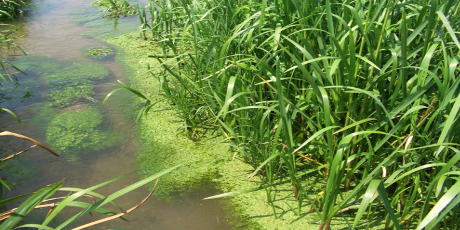Could photosynthetic algae be the key to sustainable biogas production? 20 Nov 2019

Biogas derived from anerobic digestion of wet organic materials is a renewable source of energy, with significant importance in future energy systems to reduce greenhouse (GHG) emissions from industry, transportation and domestic sectors amongst others. After initial cleaning of biogas for the removal of Hydrogen Sulfide and other trace compounds, its calorific value can be enhanced by removal of CO2, a process termed “biogas upgrading”. The resulting cleaned and upgraded gas is known as biomethane.
Strategies for biogas upgrading traditionally entail physicochemical removal ofCO2, most of these technologies are costly in terms of the energy required and the economic costs. Photosynthetic biogas upgrading using microalgae provides a promising alternative to commercial upgrading processes as it allows for carbon capture and re-use, improving the sustainability of the process in a circular economy system.
In the paper titled, “How to optimise photosynthetic biogas upgrading: a perspective on system design and microalgae selection” which was published in Biotechnology Advances this week, the MaREI Bionergy and Biofuels research group, led by Professor Jerry Murphy critically reviewed the design and operation of photosynthetic biogas upgrading and proposed a method of optimising this process.
In addition, the group identified five criteria which should be used to choose the optimal microalgae species for biogas upgrading. These include: ability for mixotrophic growth; high pH tolerance; external carbonic anhydrase activity; high CO2 tolerance; and ease of harvesting. Based on such criteria, five common microalgae species were identified as potential candidates. Of these, Spirulina platensis was deemed the most favourable species and it was estimated that 12.9 ha of an open pond containing these algae could upgrade biogas from a 1MW-electric biogas plant.
This work was funded by SFI through the MaREI Centre for Energy, Climate and Marine with industrial funding from Gas Networks Ireland. This work was also supported by the European Union’s Horizon 2020 research and innovation programme (Marie Skłodowska-Curie), by the EPA and the National Science Foundation for Young Scientists of China.
The full text can be accessed here.